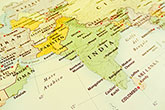Coal dust mitigation strategies
Published by Jess Watts,
Editorial Assistant
World Coal,
Mining is far safer today than it once was, but it can still present hazards. Coal dust is among the most persistent yet easy issues to overlook. While particulate matter from coal mining may not seem like much, it can raise health and environmental questions when not properly managed.
The dangers of coal dust
Repeated inhalation of coal dust can scar the lungs, causing breathing issues – a condition called coal workers' pneumoconiosis or black lung disease. Lesser concentrations may trigger asthma symptoms, and in larger volumes, coal dust’s flammability can pose combustion risks.
The same air pollution posing these respiratory dangers can impact the surrounding environment. Excessive coal dust may contribute to acid rain or cause toxic effects on marine life if it enters nearby waterways.
Government regulators have set working limits for coal dust levels, but complying with them can be challenging. Thankfully, several technological advancements and workflow best practices have emerged over the years to make particle management easier.
How mining operations can improve coal dust management
Effective coal dust mitigation is possible with attention to the right steps. Here are five strategies mining operations can employ to reduce and manage these hazards.
Perform a safety and environmental audit
The first step is to conduct a third-party audit of the mine’s safety and environmental impact. A survey will provide a baseline of the site’s current hazards and reveal where operations can improve. A thorough audit will also generate company-specific data for future decision-making, streamlining optimisations down the line.
Employ dust suppression methods
Regardless of a mine’s current levels, dust suppression is essential. Water spraying and chemical controls reduce the dispersion of airborne particles, preventing potential health and environmental effects. Chemical suppressors are typically more effective, but water has lower upfront costs and is less prone to weather-related disruption. Mines should review their budgets and site conditions to determine the best option.
Ensure proper ventilation
Mining organisations should also facilitate proper airflow to reduce respiratory hazards and minimise particulate pollution. Federal regulations require at least one fan per coal mine, but including more may be necessary for high dust concentrations. This infrastructure is also most effective when it follows a proactive maintenance plan, and employees may need personal respirators, too.
Use safer mining techniques
Workflow adjustments can also help by minimising the dust that mining operations stir up. Controlled, precise blasting will generate less particulate matter, as will automated drilling, as it’s more direct and less wasteful than manual alternatives. Wet drilling is also generally preferable, as it keeps loose material from escaping into the air.
Address material handling
Mines should pay attention to how they transport coal off-site. Enclosed conveyors, tightly sealed containers on outbound trucks and well-maintained equipment will reduce dust pollution caused by vibration and motion. A site audit should reveal where the largest areas of improvement are.
Coal dust safety deserves attention
Coal dust is a prominent but manageable hazard. Recognising its environmental and health concerns is the first step toward safer, more responsible mining practices.
When more coal companies consider these risks and associated best practices, mining can become a cleaner, safer industry. Doing so is crucial for future success in today’s environment.
Author bio
Jane Marsh is a seasoned environmental journalist and the Editor-in-Chief of Environment.co, specialising in in-depth coverage of environmental trends, sustainability, and the evolving energy landscape. With her work featured on leading platforms like Renewable Energy Magazine, Manufacturing.net, and Nation of Change, Jane brings a keen perspective on the intersection of energy innovation and industry practices.
Read the article online at: https://www.worldcoal.com/coal/09062025/coal-dust-mitigation-strategies/
You might also like
TAQA announces sale of lignite-based power plant in India
Abu Dhabi National Energy Company PJSC (TAQA) has announced the divestment of its 100% stake in TAQA Neyveli Power to MEIL Energy.

